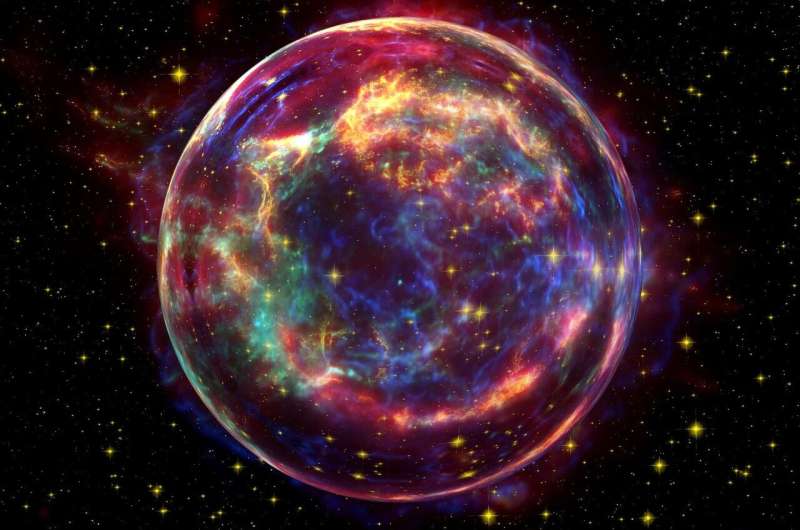August 2, 2022 report
Supernovae and progenitors may have contributed more dust to the solar nebula than thought

A team of researchers at the Max Planck Institute for Chemistry, working with a colleague from Université Paris-Saclay, has found evidence that suggests supernovae and their progenitors may have contributed more dust to the solar nebula than previously thought. In their paper published in the journal Nature Astronomy, the group describes their survey and analysis of work done by others in the field regarding the nature of presolar grains and how it led them to reassess the contribution of supernovae grains to stardust.
Presolar grains are materials that originated in stars—when such materials are flung into space after a star dies, they are exposed to temperatures and pressures that result in the formation of grains—these materials become stardust, most in the form of silicates, which are the building blocks of rocks. Those that are older than our solar system are known as presolar grains—they avoided the fate of other material that coalesced into our sun and the planets. They can be found today in minute quantities in the dust between the planets, in comets and in meteorites. Presolar grains were discovered approximately 30 years ago and since that time, such grains generated from supernovae were believed to make up just a small percentage of those that can be observed today—many in the field have suggested it was likely just 10%. In this new effort, the researchers have found evidence that suggests the percentage should be much higher, perhaps as high as 30%.
As material is created in a star, it takes on certain characteristics of that unique individual star—it has what the researchers describe as an isotopic composition akin to a diary. Thus, presolar grains have features that allow researchers to determine if they were thrust out into space due to a supernova.
The work involved searching for and analyzing research into presolar grains over the past several decades. They found evidence suggesting that such grains from supernovae were far more prevalent than previously thought. They also note that future work using more sophisticated technology could provide more accurate estimations of supernovae presolar percentages in the solar nebula.
More information: Peter Hoppe et al, Dust from supernovae and their progenitors in the solar nebula, Nature Astronomy (2022). DOI: 10.1038/s41550-022-01737-5
Journal information: Nature Astronomy
© 2022 Science X Network





















